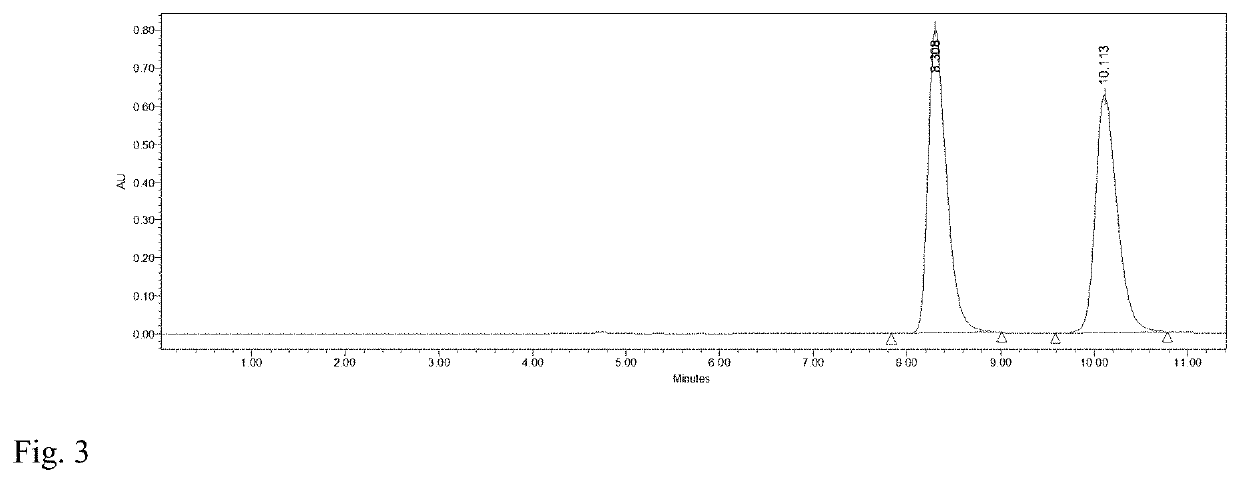Strain of meyerozyma guilliermondii and its use in methods of catalytic synthesis of 2,5-dihydroxymethylfuran
a technology of dihydroxymethylfuran and meyerozyma guilliermondii, which is applied in the field of yeast strain and catalytic synthesis of 2,5-dihydroxymethylfuran via 5hydroxymethyl, can solve the problems of difficult biocatalytic reduction of hmf to dhmf, harsh reaction conditions, and unsatisfactory selectivity of chemical methods, so as to achieve good efficiency and selectivity in hmf reduction
- Summary
- Abstract
- Description
- Claims
- Application Information
AI Technical Summary
Benefits of technology
Problems solved by technology
Method used
Image
Examples
example 1
[0028]Pre-cultivation and cultivation of Meyerozyma guilliermondii SC 1103 cells M. guilliermondii SC1103 cells were pre-cultivated at 30° C. and 200 r / min for 12 h in the YPD medium containing 1% yeast extract, 2% peptone and 2% glucose. Then, 2% seed culture was inoculated to the fresh YPD medium. After incubation at 30° C. and 200 r / min for 12 h, the yeast cells were harvested.
example 2
[0029]To 4 mL of phosphate buffer (100 mM, pH 7.2), 0.16 mmol HMF and 0.12 mmol glucose were added and mixed evenly. Then M. guilliermondii SC1103 cells harvested in Example 1 were added with a concentration of 20 mg / mL (cell wet weight). The reaction mixture was incubated at 30° C. and 200 r / min. The biocatalytic reduction reaction was monitored by HPLC (FIG. 3). After 7 h, DHMF was afforded in a yield of 89% and a selectivity of 99%.
example 3
[0030]To 4 mL of citrate buffer (100 mM, pH 4.0), 0.16 mmol HMF and 0.12 mmol glucose were added and mixed evenly. Then M. guilliermondii SC1103 cells harvested in Example 1 were added with a concentration of 20 mg / mL (cell wet weight). The reaction mixture was incubated at 30° C. and 200 r / min. After 7 h, DHMF was afforded in a yield of 89% and a selectivity of 99%.
PUM
| Property | Measurement | Unit |
|---|---|---|
| concentrations | aaaaa | aaaaa |
| temperature | aaaaa | aaaaa |
| pH | aaaaa | aaaaa |
Abstract
Description
Claims
Application Information
 Login to View More
Login to View More - R&D
- Intellectual Property
- Life Sciences
- Materials
- Tech Scout
- Unparalleled Data Quality
- Higher Quality Content
- 60% Fewer Hallucinations
Browse by: Latest US Patents, China's latest patents, Technical Efficacy Thesaurus, Application Domain, Technology Topic, Popular Technical Reports.
© 2025 PatSnap. All rights reserved.Legal|Privacy policy|Modern Slavery Act Transparency Statement|Sitemap|About US| Contact US: help@patsnap.com


